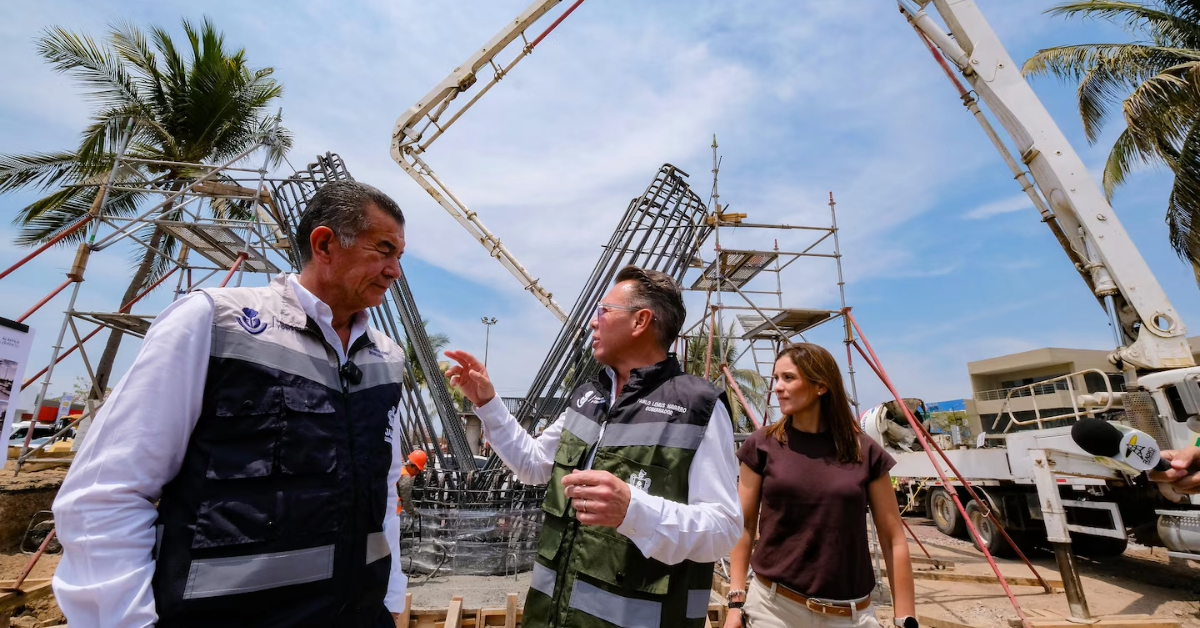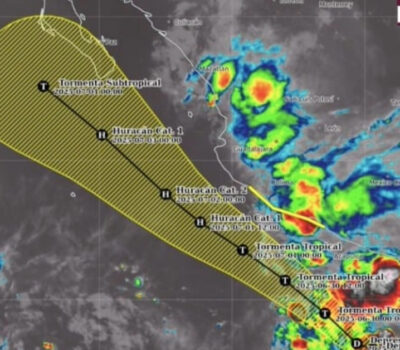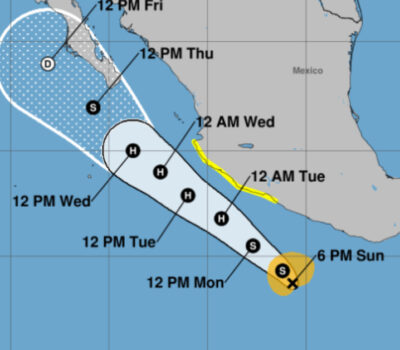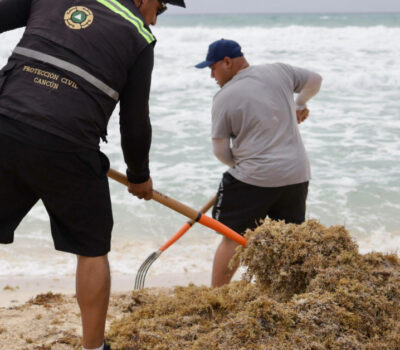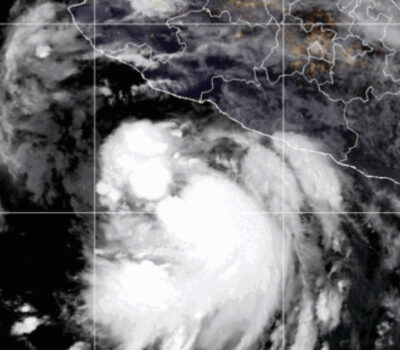PUERTO VALLARTA—With backhoes roaring behind him and columns of rebar already jutting sky-high, Governor Pablo Lemus Navarro toured the construction site of the Las Juntas Interchange on Thursday, calling the project “one of the most important road solutions for the entire Bahía de Banderas metropolitan corridor.”
The interchange—an elevated overpass for traffic heading north toward Bucerías, paired with an at-grade solution for southbound lanes—anchors a 2.2-billion-peso Infrastructure Connection Plan designed to ease chronic congestion between Puerto Vallarta, Jalisco, and Bahía de Banderas, Nayarit. “We are all working here out of a deep love for Puerto Vallarta,” Lemus said, noting that the structure will also funnel vehicles quickly onto the highway leading to Mascota and the mountain towns beyond.
Multi-level, Multi-modal Investment
According to the governor, financing comes from a three-way partnership among federal, state and municipal governments, supplemented by private-sector contributions. Federal support includes an additional 8 billion pesos for the Amado Nervo Bridge, a link expected to shorten travel times between Tepic and the Jalisco coast once completed.
Closer to the coast, private developers are constructing entrance and exit ramps as well as merging lanes along Federal Highway 200 to dovetail with the new interchange. On the maritime side, Jalisco will break ground later this year on two docks—one in Mismaloya and another downtown—to expand cruise and excursion capacity.
Public Transport Overhaul
Mobility improvements extend beyond concrete and steel. Sixty-seven new, air-conditioned diesel buses will roll into Puerto Vallarta “within weeks,” Lemus confirmed. A further boost to electromobility is slated for late 2025, when 19 fully electric, climate-controlled units arrive. “Between November and December, 19 more units will arrive—all of them electric—to promote a cleaner, quieter public-transport system,” he said.
Technical Snapshot of Las Juntas
- 2-lane northbound overpass (Puerto Vallarta–Bucerías)
- Hydraulic-concrete paving in both directions
- New return lanes and pedestrian bridge on Revolución Street
- Traffic-signal modernization, widened sidewalks and landscaping
David Zamora Bueno, Jalisco’s secretary of Infrastructure and Public Works, reported that 14 piles—each 20 meters deep—have already been drilled to support the interchange. “All of this is being done to create an architectural solution that blends harmoniously with Puerto Vallarta’s urban fabric,” he said, projecting completion by year-end.
Expanding the Network
The governor’s tour also included the ribbon-cutting of Francisco Murguía Street, freshly rebuilt at a cost of 18.2 million pesos. The upgrade—featuring new hydraulic concrete, storm drains, LED lighting and street furniture—benefits an estimated 56,000 residents and visitors who use the corridor daily.
Cross-Border Cooperation
Later in the day, Lemus met with Nayarit Governor Miguel Ángel Navarro Quintero to coordinate policies on mobility, security, tourism, health and agriculture for the fast-growing coastal region straddling the state line. The two leaders pledged to create joint working groups and a unified public-transport strategy so that residents and tourists can move seamlessly throughout the metropolitan area.
“We will achieve greater fluidity and improved mobility in our tourist destination,” Puerto Vallarta Mayor Luis Ernesto Munguía González said, thanking the state for its “vision to give the city a new face.”
What Happens Next
- Mid-2025: Completion of Las Juntas Interchange
- Late 2025: Arrival of 19 electric buses
- 2026: Expected finish of the Amado Nervo Bridge
- Ongoing: Construction of new docks in Mismaloya and downtown
As construction crews welded rebar cages in the sun, Lemus looked over the site and repeated a message that has become a refrain of his young administration: “Better infrastructure means better opportunities—for workers, for businesses and for every family that calls this bay home.”
PUERTO VALLARTA—With backhoes roaring behind him and columns of rebar already jutting sky-high, Governor Pablo Lemus Navarro toured the construction site of the Las Juntas Interchange on Thursday, calling the project “one of the most important road solutions for the entire Bahía de Banderas metropolitan corridor.”

